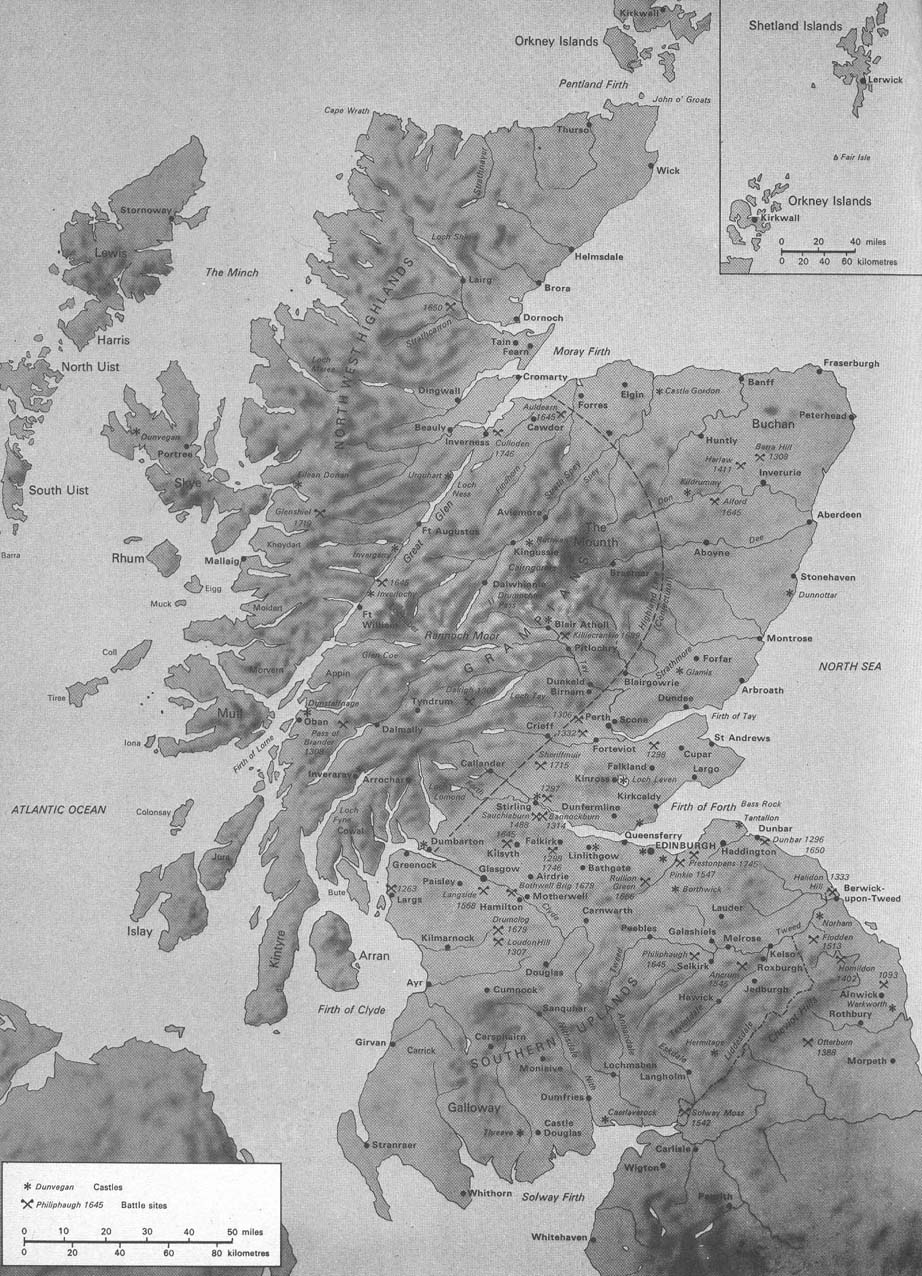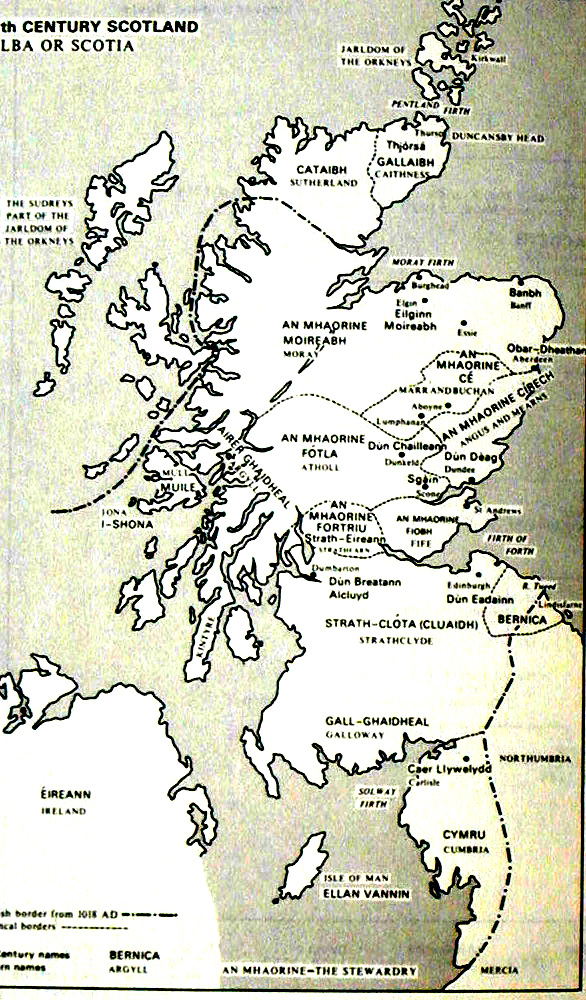
MACBETH
CLASS NOTES ARE POSTED AS AN AID. THEY DO NOT SUBSTITUTE FOR CLASS ATTENDANCE. ATTENDANCE IS A REQUIREMENT FOR THE COURSE!!!!
The Shakespeare play was written in 1606 or 1607, just over 600 years after the birth of the real Macbeth. He relied on materials from an English historian named Hollinshed, who himself got much from early writers, many of whom were Scots.
Macbeth in Fact and Film
The real Macbeth was born 1000 years ago in 1005 in a Scotland that does not resemble the political Scotland we know today.
Today Scotland lies as a single “country” north of England, and is often thought of as divided into three areas – the lowlands (the area south of the mountains), the highlands (north of the mountains) and the Islands. The country is divided into several geographic regions
MAP OF CURRENT SCOTLAND

Scotland in Macbeth’s time did not exists. The geographic was divided into a number of areas or kingdoms – To the north east were the Picts, while the western islands and the north were under Viking control. Between the two lay Moray (pronounced Murray) which is where Macbeth’s story actually is told.
MAP OF 11th CENTURY SCOTLAND

An interesting problem deals with the problem of perception of other things and other places. And other times. In a sense, from the time of Boice on there have been some distortions in the Macbeth story leading people to see things which are not there. This includes even the appearance of the witches in some historical writings. This parallels the episodes in Macbeth of seeing daggers, ghosts and blood that aren’t there. This is interesting because Shakespeare certainly wasn’t aware of it.
The Play and the Films
The play is one of Shakespeare’s “big three” Hamlet, Lear and Macbeth although unlike the others it has virtually no subplots and revolves almost totally around Macbeth. In fact currently in Los Angeles there is one man version being performed. Welles, who was certain an egoistic actor, may have chosen this play just because it would show case him. The film’s acting is generally weak – Welles himself often not being the best acor around. Jeanette Nolan is equally weak.
The play has many interesting elements in it. There is an enormous amount of supernaturalism in the play – not only with the witches, but with omens. There is a great deal of psychological manifestation as well – a dagger, a ghost and blood on one’s hands which are not there. One can in fact look at the relationship in this play between psychological hallucinations and supernatural events.
Directors also have to make decision about such things as whether to allow the audience to see the hallucinations. How does Welles handle the hallucinatory sequences in the play (the dagger, the ghost). Is the audience allowed to see them? What impact does it have if the audience sees these things? If they do not?
It is thought by some that the huge amount of supernaturalism in the play may even be responsible for many actors’ negative reaction to the play, which is generally referred to as “that Scottish play” in order to avoid actually naming. Should someone actually say the name, they are supposed to go outside, turn around three times and spit and then things will be all right. (Notice the three turns in the behavior to break the “curse”, the three witches, and the three things necessary to wind up the charm in the play
Welles has certainly made a conscious decision to enforce the “Scottishness” of the play. He uses a “Scottish burr”, many indications of tartan, at least one kilt, Celtic crosses and off stage bag pipe music to underscore this aspect of he play. Many of these are anachronistic.
On a more personal level Welles has made changes in the script to make it focus more on him. Lady Macbeth no longer reads the letter, but Macbeth is seen dictating it. Macbeth even intrudes into the sleep walking scene.
Welles had produced a staged version of the play which came to be known as the “Voodoo Macbeth”. In what ways does this show in the film which retains many aspects of the play?
The film often appears “staged” rather than a film, yet there are many filmic elements about this version. Welles is known for his high contrast lighting, (shadows), moving camera and deep focus. How are they used in the film?
Another aspect of the film is the use of “voice overs” where in many of the monologues we see the character and hear the character, but the character’s mouth does not move. This is a kind of internal monologue that is going on, which would generally not be dome like this on stage.
General Questions for next time:
What is the play about? What is its “subtext” (theme)?
What is the director’s idea in each version? How does the director alter the play and what we see to bring about that “vision”